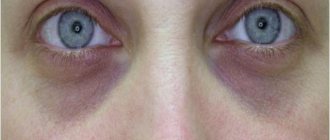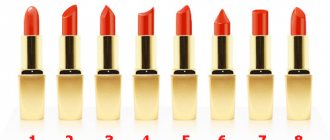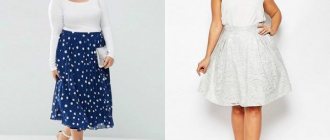Choose the right train and carriage
Several trains may pass through the station you need. They are not the same in terms of comfort and service: one may have new carriages with air conditioning and dry closets, while the other may have everything the old fashioned way. To avoid this, you need to choose the right train. First, pay attention to the number:
- 1–150 - fast trains that run all year round;
- 151–298 - seasonal or additional fast trains;
- 301–450 and 601–698 — regular passenger trains;
- 451–598 - seasonal or one-time trains.
If possible, choose regular trains (1–150 and 301–450). They run constantly, so Russian Railways replaces old cars with new ones. In these, reserved seats with air conditioning, dry closets, sockets in each compartment and new bedding are more common.
Fast trains really go faster: according to the standards of Trains and Cars - Russian Railways. their speed is 50–91 km/h. Passenger cars have a maximum speed of 50 km/h.
Numbers 151–298, 451–598 and 601–698 are seasonal or additional trains. They are allowed in the summer on southern destinations (Adler, Anapa, Novorossiysk) and on holidays (New Year, International Women's Day, Victory Day, National Unity Day), when demand is high and there are not enough tickets for everyone. Such trains are assembled on a residual basis from those cars that are available. These are exactly the same Soviet reserved seat carriages with wooden windows and two sockets for everyone.
When buying a ticket, look at the class of service: a dry toilet and air conditioning are available in class 3E and 3B carriages
Shift workers travel regularly on some trains. This is not always a bad neighborhood, but sometimes you are unlucky: a tired man may drink too much alcohol, snore too loudly and put smelly socks in the aisle. Most often, shift workers travel by train to Nizhnevartovsk, Novy Urengoy, Neryungri, and Barnaul.
For beginner tourists: Selecting clothes for a hike | Part 2. How to stay warm while hiking?
We bring to your attention the second of three articles in the series “ three-layer concept of tourist clothing ”. In it we will talk about a very important intermediate layer and everything that is directly related to it - designs, materials, care, selection principles.
Unfortunately, modern man in his cities has become thoroughly softened and has lost the temper of his harsh ancestors.
Most of the people who go on hikes with us are residents of big cities, usually people who work in offices or in comfortable conditions. Having become accustomed to thermal comfort (radiators or air conditioning at home, climate control in the car, the same at work), a modern city dweller is able to feel comfortable without special means only in a very limited temperature range. In all other conditions, we want to put something on ourselves. Even trips to the tropics often force us to dress up, especially our travels - we love hiking in the mountains!
Let's try to understand together how, with what and in what quantity it is better to insulate ourselves while traveling. In the previous article we already dealt with the selection of outer protective clothing, but in itself it provides very poor protection from the cold. A novice tourist may think that thermal underwear will effectively protect him from the cold... But don’t be fooled by the prefix “thermal” in this word; in cold weather, thermal underwear and a protective jacket will not be enough for you, to put it mildly (thermal underwear will be discussed in more detail in our the next and final article in this series).
It is the “sandwich” of all three layers that will protect you most effectively. What should the insulation layer consist of? There are two main options for its structure:
- “loose” insulation hidden in a fabric clothing case, for example, a down vest;
- structured, fairly dense insulation, which itself forms the basis of clothing, for example, a fleece sweatshirt.
And two main types of insulating materials :
- natural (wool, cotton, down, etc.);
- artificial (fleece, the notorious “sintepon”, sinsulate, holofiber, polarguard, primoloft - this list is almost endless).
Insulation in clothing for hiking
Now, very briefly about insulation materials in the context of tourism.
Desirable qualities of insulation :
- poor thermal conductivity, low weight,
- high compression (can be folded into a minimum volume),
- high recovery ability after compression,
- high vapor conductivity,
- low hygroscopicity (maintains its properties at high humidity),
- ability to dry quickly,
- possibility of simple maintenance - cleaning, repair, affordable price.
From this approximate list, everyone can choose those factors that are most important to him.
Pooh
Thus, not just any “warm clothes” are suitable for successful use on hikes. First of all, this applies to natural insulation materials. Compared to artificial ones, they weigh a lot, dry poorly, and are difficult to compress. The advantages of these materials in most cases do not compensate for their disadvantages. So, many people know that wool warms well when wet, and most natural materials are less afraid of sparks and high temperatures than their synthetic relatives. But if you are not a firefighter, this quality is not the main one. Probably the only type of natural insulation that is not even going to give up its position yet is waterfowl down . In fact, so far not one of the most modern synthetic analogues of down has been able to compare with it in terms of thermal conductivity, compression ability, and environmental friendliness.

The principle of operation of the down layer
As you know, fluff can be different - from cheap market fluff to high-quality, which has gone through up to eighteen (18!) stages of manual and machine processing. Fill Power index is best suited . This indicator indicates the ratio of the volume occupied by down to its weight. The higher this indicator, the better the thermal insulation characteristics of the fluff. Now the highest values are approaching 1000 (I have seen values up to 950). Of course, products made from down of this level are very expensive. Indicators from 650FP are considered good. If the indicator is lower, choose synthetic down.
The main disadvantages of down:
- high price,
- difficult/expensive care,
- hygroscopicity.
Once down absorbs water, it becomes practically useless as insulation. Drying wet down while hiking is extremely problematic. Currently, there are already technologies for creating a down coating that partially eliminates this fear of water. But so far, the cost of such products is astronomical, and their effectiveness is questionable. Down is best suited for cold and dry climates. But that doesn't mean it can't be used in other places. The main thing is:
- do not use down clothing as clothing at high temperatures (i.e., it is more of a comfortable clothing for bivouac and halts; during transitions, it is better to put it in a backpack, of course, if you are not in the Arctic or highlands);
- do not wear down clothes in the rain or high humidity without protection (just don’t wander around the camp in a down jacket in the rain, put a membrane on top);
- Use every opportunity to preventively dry the down during a hike (put the down in the sun, let it air in a dry wind, protect it from condensation in the tent).
Using these simple principles, I and many other people managed to quite happily use down even on rainy mid-season hikes, such as our autumn hike in Montenegro.
Fleece and other synthetic insulation
Unlike down, most synthetic insulation materials boast relative indifference to moisture. Even a wet product made from, say, 3M Thinsulate will keep you warm and will dry quickly simply from the warmth of your body. Almost all synthetic insulation does not tolerate high temperatures well - when heated, they first lose their structure, then melt or even catch fire. Therefore, you should be careful when drying; most of these products cannot be ironed.
Fleece stands a little apart in the list of insulation materials, a material recognized as one of the greatest inventions of the last century. Fleece forms a fairly ordered fibrous structure, strong enough to be made into full-fledged clothing. At the same time, it is very warm, non-hygroscopic, dries quickly, and very durable. The most famous brand that produces high-tech products from this material is Polartec.

Polartek is divided into several types according to structure and thickness, respectively, according to heat capacity and is designated by the numbers 100, 200, 300. “Sotka” is the thinnest, lightest and “coldest”, “three hundred” is the warmest. However, there is an opinion that fleece and a similar material called Polartek are not the same thing. Let's leave this question without comment; for most it is not interesting.
It’s rare that a tourist will go hiking without fleece clothing. There are windblock and windstoper technologies that make fleece clothing windproof, although a little bulkier. Also, the additional windproof shell impairs the “breathability” of the material.
Unlike fleece, most other insulation materials in their structure more or less copy the structure of down - they consist of many fibers (often hollow inside), creating many miniature air chambers for excellent thermal insulation. Let's briefly talk about the most popular ones on the market.
Polarguard 3D is lightweight, hypoallergenic, compact, with excellent compression and decompression material. 100% polyester, hollow fiber.
Primaloft is one of the most popular synthetic insulation materials for travel clothing today, used by most leading manufacturers. It exists in several versions, so there are varieties for more extreme use with improved characteristics, but a shorter service life.
Thermolite (DuPont) is also an excellent insulation material, available in several versions. The warmest is thermolite EXTREME.
Polyfill is a relatively new insulation material that has the classic advantages of this group. Breathes well and does not absorb moisture. It is often used to produce clothing for athletes and tourists.
Thinsulate 3M is another well-known synthetic down substitute. It has very good thermal insulation, but has a significant drawback - poor recovery after strong compression, so it is more suitable for hiking clothing than for sleeping bags.
What types of insulating clothing should a tourist whose travel geography covers a wide variety of temperature conditions pay attention to? For starters, clothing for the upper body:
Sweatshirts made of fleece (polartek), commonly known as polarki
I recommend getting two – a thinner one and a thicker one. This set of two different fleeces with thermal underwear and a membrane jacket is an excellent option for demi-season hikes at low altitudes in relatively warm countries, for example Turkey, Montenegro, the Canaries or North Africa in winter. It’s pleasant not only to walk in them, but also to sleep, and if the sleeping bag is warm, then a folded jacket makes an excellent soft pillow. The design and materials of such products today will satisfy the most demanding tourist - color, style, texture of the material, technologies used, everything can be selected individually to suit your needs and taste.
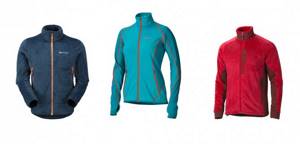
Down jacket
A down jacket or a jacket made from a synthetic down substitute (in the Arctic they say parka). If you are going to travel in the cold season, not only in the tropics, or climb mountains to significant heights, you will definitely need such a jacket. Down or synthetic? It is difficult to give definite advice. Good down with the same weight is noticeably warmer, much more expensive, packs better into a small volume, and is more difficult to maintain. A jacket with modern synthetic insulation (most often you will come across primaloft) will dry faster, and if you suddenly cut or pierce the shell, the insulation will remain in the middle, and you will not become an illustration of a “chicken coop explosion” situation. If it is not possible to become the owner of both clothing options, choose according to the following criteria: for not very cold (up to -10 at rest, -20 with active use, but more often at temperatures bordering on zero), but wet weather, especially with limited financial resources a synthetic version would be preferable; for dry cold, for those who value minimal weight and volume of equipment on a hike, or simply for chronic cold weather, you should choose down.
I advise you to choose a jacket with a hood, from the thinnest possible fabric with a Rip Stop weave - it is not necessary that the parka protects you from harsh weather, for this you still have a protective jacket with you - let it perform its functions. In addition, wearing a windproof jacket on top provides additional thermal insulation. If you choose the right size of your clothes, even several layers will not hinder your movement.
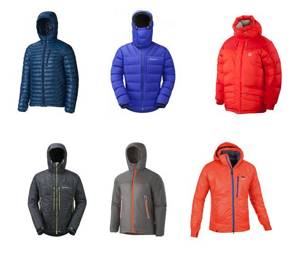
Down vest
A down vest or a vest made of synthetic insulation. A very pleasant and often necessary element of your hiking clothing. The vest, made of modern materials, weighs almost nothing and takes up almost no space; you can take it with you “just like that”, “in reserve”, but how nice it is to put it on on a cool evening, or during a sudden cold snap on the march. Which material to choose? The answer is the same as with jackets. The only moment. A vest made of synthetic insulation is better suited as “running” clothing. Another good option is to buy a relatively light insulated jacket and vest instead of a very warm jacket. Dressed together in terms of warmth and weight, they will differ little from their “super-warm” counterpart, but there will be many more options for combining.

Fleece pants
If possible, you can purchase two pairs - from thin and thick fleece, respectively, for demi-season and winter hikes. A very comfortable and versatile thing - you can march in them, bivouac, they are warm and pleasant to sleep at night. They don’t weigh much, dry quickly, and have an almost unlimited service life.
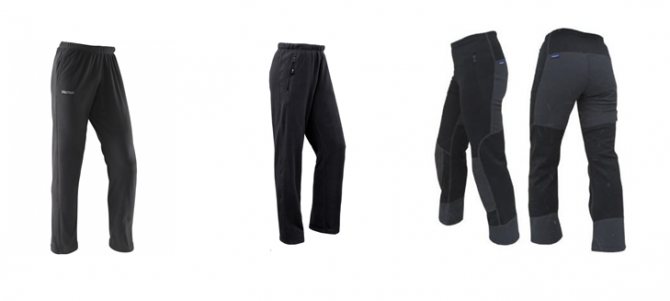
In very cold weather, pants can serve as thermal underwear.
Caring for warm clothing for hiking
You won’t have any special problems with clothes made with synthetic insulation – they are much easier to care for than membranes or down. As a rule, they can be washed in a machine using a gentle washing mode for synthetics with a water temperature of no more than 40 degrees, with a spin cycle. Do not use bleaches or other aggressive substances; liquid powder is better, or specialized powder is even better. Ironing such items is generally contraindicated.
As for fluff, things are not so simple. It is better not to wash modern high-tech down items at home at all; it is more prudent to send them to a specialized cleaner whose reputation you completely trust and which provides a guarantee for its work. If you don’t have this option, wash in a machine at 30 degrees with a special detergent, or, in the worst case, liquid detergent pre-diluted in water along with tennis balls (pre-washed) - they will prevent the fluff from clumping. No spin! After rinsing, remove the down clothing and let the water drain. Dry at room temperature, shaking occasionally. Gradually drying, the clothes will begin to regain their presentation, and you will have a calm state of mind and you will personally find out what happens if you completely get them wet on a hike. Try to reduce the number of times you wash down clothes to a minimum – this will extend their life. Products made from good goose down can last more than ten years without losing their qualities.
Now we have not considered all types and options for insulating layers of clothing, but only those that I consider the main and most universal for most types of trekking and climbing. The presented types of clothing have been tested by me and my many hiking companions for many years and have proven themselves to be comfortable, functional, and perfect for most types of travel throughout the year.
I wish you to make an informed choice based on your goals and objectives while hiking. Remember - equipment is just a necessary tool to create opportunities to overcome new spaces and gain invaluable experience of trips and expeditions.
Author of the article: Sergey Lakhotsky.
Buy your ticket in advance
The most inconvenient places are the upper sides. They usually go to those who buy a ticket to a popular destination at the last minute. Try to get tickets in advance: they arrive at the opening time for ticket sales. on sale 90 days before departure. For example, if you plan to travel on December 30, you can buy a ticket on October 2. Even earlier (120 days in advance) you can purchase tickets for the Red Arrow and Express trains from Moscow to St. Petersburg.
For international flights, different timings apply:
- Tickets to the CIS and Baltic countries go on sale 45 days in advance. If the train travels through Moscow - for 60.
- To Paris, Berlin, Prague and Nice - in 60 days.
- To Moldova - in 30 days. If the train travels through Moscow - for 45.
Choose a good place
It is traditionally believed that the best seats on the train are the bottom ones. It’s comfortable to sleep there, you can calmly dine at the table, read a book, look out the window and put your luggage away so that no one can get it. The only problem is fellow travelers who try to sit or stand with their feet on your bed.
If the trip is no longer than 10–12 hours, and you plan to sleep on the road, it is better to take the top place: no one will disturb you there. And if you're traveling as a couple, don't be afraid to take side seats. This way you can dine together at the same table and won’t be distracted by your neighbors.
- When purchasing tickets, look at the train layout: the lower shelves are odd-numbered seats, the upper ones are even-numbered. The side streets start from 37 to 54, with 37 and 38 near the toilet.
- The third and sixth compartments have emergency exits, so the windows there cannot be opened. This is not a problem if the car has air conditioning, but it becomes a serious problem if it is not, and the journey is far away. Please take this into account when purchasing your ticket.
- Not the best places - in the first and last compartments. Passengers will constantly pass by you to go to the toilet, throw out the trash or get off at the station, and at night the light from the vestibule may disturb your sleep.
During the cold season
The tips listed above are ideal when choosing how to dress for a trip in the summer. The winter months require special solutions.
Woolen fabrics provide the best warmth. But wearing wool clothes indoors can feel stuffy. You can take off a wool sweater and put it next to it, but you will end up with bulky additional luggage.
Our advice is to use technical fabrics. Wear special thermal underwear under your main clothes. If necessary, you can undress in transport and stay in it only: modern thermal underwear is made in beautiful colors and an interesting cut.
Grab a snack
It is more pleasant to travel well-fed than to travel hungry. Take with you something tasty, but not perishable: fruits, fresh vegetables, bread, processed cheese, dried fruits, nuts, instant cereals or noodles, something for tea. And a few more tea bags, so as not to buy them at exorbitant prices from the conductor.
You can also order ready-made food on the road and pick it up when you arrive at the station. Any food delivery service will bring you hot pizza or burgers to your car. To play it safe, place your order when the train has a long stop (at least 30 minutes) so that the courier has time to find your car.
Things to consider when traveling in Europe
Many of our compatriots look simply ridiculous in European countries; they can be distinguished from the local population immediately - just look at their clothes. In order not to get into trouble, not to cause bewilderment and a smile on the part of local residents of European countries, it is worth remembering the following:
- Lurex, rhinestones, flounces and ruffles, open shoulders and décolleté are a thing of the past – only modest and almost faceless outfits will look natural in Europe. It is better to leave the attributes of “luxury” at home or go out in them at night. You can “play” with fabric textures, for example, try combining a thin cashmere coat and a silk skirt. But without experience, it’s unlikely that you’ll be able to look elegant in such an outfit, so it’s better not to take risks.
- Jeans are a must - they are always appropriate, go well with various sweaters and T-shirts, and you can wear them to a museum, a cafe, or a trip on a river boat. Only jeans should be modest - without a scattering of rhinestones, lace inserts and “holes” (yes, torn models are also a thing of the past).
- Warm jackets and sweaters. Even if according to the forecast there will be sun and heat, this still does not mean anything - weather forecasters have no direct connection with the “heavenly office”, and all other data is conditional. Let your suitcase contain a couple of jackets or sweaters, different in thickness.
- T-shirts. They are universal - in case of a sudden cold snap, you can put them under a sweater and insulate yourself; in the heat, they will become a real salvation. You should avoid large inscriptions, rhinestones, sequins and embroidery - everything is neutral or with a minimum of decoration.

As for shoes, sneakers are the way to go. True, if you have shoes with round toes and minimal heels, then this will be the best option - you can go to a museum, go on an excursion, and go to a restaurant. Just don’t buy this model just before your vacation! There is always the possibility that the shoes will squeeze and rub - what pleasure is there in traveling, sheer pain and disappointment.
Take a shower
Some trains have showers. For 150 rubles you will be taken to the headquarters carriage, and for an additional fee you will be offered slippers and a disposable cap.

visual.rzd.ru
If your train doesn't have a shower, bring micellar water for cleansing and thermal water to refresh yourself if it's hot in the train. Wet wipes will come in handy: you can wipe your hands and the table in the reserved seat with them.
Tell your girlfriends
Support the Womee project, because we put our whole soul into it - share the article with your friends by clicking on one of the buttons below

I travel a lot and often and I really don’t like checking things in as luggage. Whatever trip I go on (from 2 days to 2 weeks with different climate zones), I travel with a small suitcase 55*40*20, which fits in hand luggage. Firstly, it saves time at the airport, secondly, it insures against loss, thirdly, you don’t have to pay extra for it, and, finally, you don’t have to carry heavy things. As my experience shows, if you have a place to wash, you need exactly the same amount of clothes for 2 weeks and 3 days, since when traveling for 2-3 days you still have to take clothes of different levels of warmth with you. Here I want to share my experience of putting together a capsule wardrobe that is suitable for traveling from winter to spring/autumn.
Walk at the stations
Think of a train ride as a journey through Russia. It is unlikely that you would get to Arzamas, Murom or the Likhaya station on your own. Therefore, do not sit in the compartment during stops, but walk along the platform. This way you can get some air and warm up, and at the same time hear the accent of the local grandmothers selling pies.
Russian railways are a landmark that we do not appreciate. It's time to start.
View this post on Instagram
7 days, 8 time zones, 9,289 kilometers. Across Russia on the Trans-Siberian Railway. Shot on iPhone by Sergey Ponomarev
Posted by apple (@apple) Mar 28, 2020 at 6:04 am PDT
One versatile dress
If during your trip you are planning an evening out or attending an event, don’t even think about bulky dresses and heavy suits that take up a lot of space. Women should opt for a lightweight dress, high-heeled sandals and a pair of bold earrings, while men should go for a pair of trousers, a flexible, multi-functional blazer, a white shirt and loafers. Ideally, you can use all these things for other outfits and situations. Moreover, such items are easy to pack without adding extra weight to your suitcase.
Material prepared by Angelina Golovach

